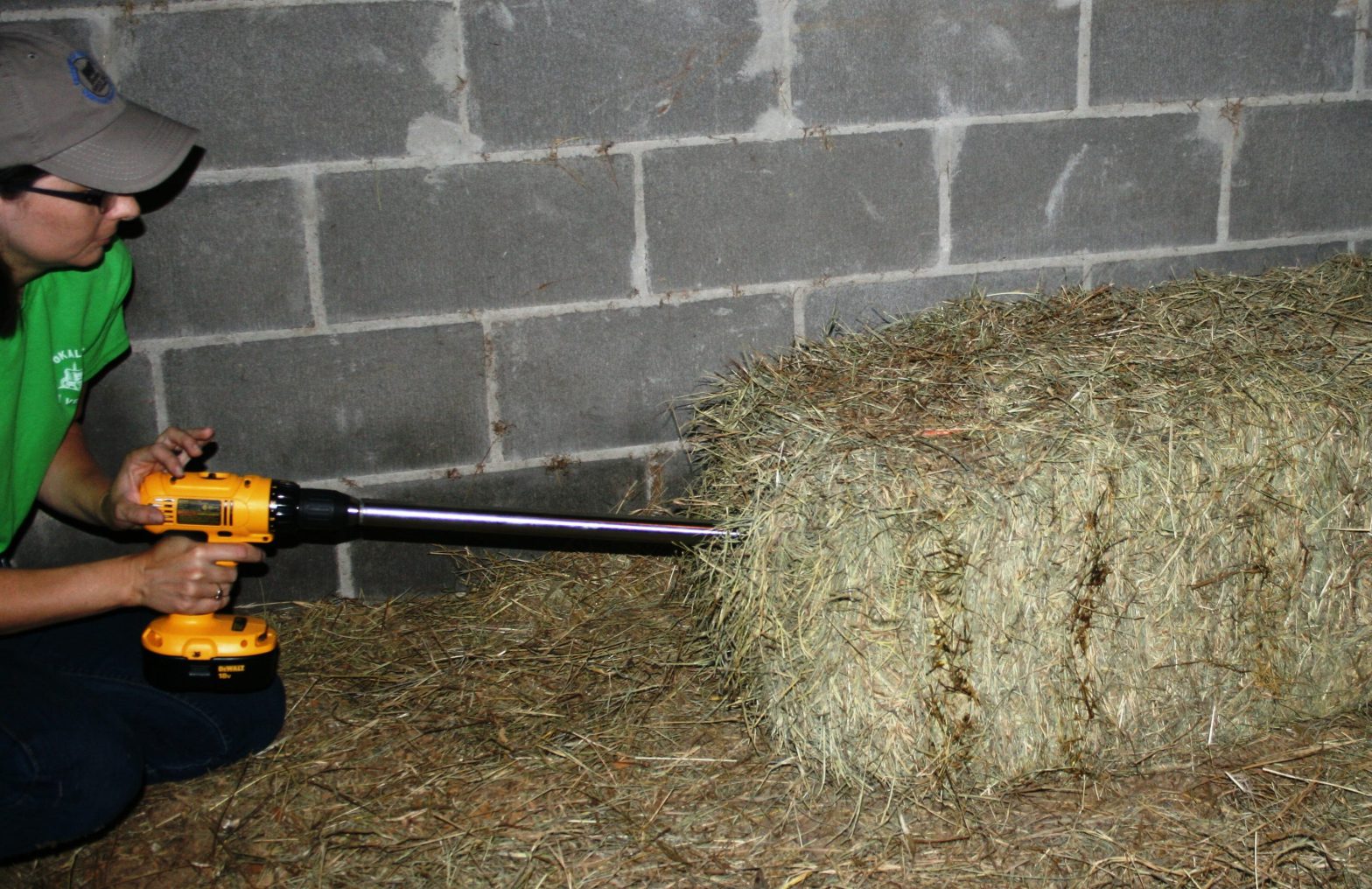
Often people define hay quality in terms of palatability. But we also need to consider other parameters such as digestibility and nutritional value.
To evaluate hay on these parameters, you need to sample and test your hay.
A hay sample is easy to take. We sample each hay lot separately. A hay lot is hay from the same field and same cutting that is harvested under the same environmental conditions and has the same forage composition. Hay samples are taken using a hay probe. The sample is then sent to a lab such as our University of Florida Institute of Food and Agricultural Sciences Forage Extension Laboratory or a private lab such as Waters Lab in Georgia.
Hay samples are taken using a hay probe. The sample is then sent to a lab such as our University of Florida Institute of Food and Agricultural Sciences Forage Extension Laboratory or a private lab such as Waters Lab in Georgia.
Sample results should include crude protein and total digestible nutrients at a minimum and should be reported on a dry matter basis. Dry matter refers to the portion of the forage after water is excluded. Reporting on a dry matter basis allows us to compare different forages. Crude protein is the nitrogen and amino acids in feeds. Total digestible nutrients, or TDN, represents the energy value of feeds, which is the sum of digestible fibers, starch, sugars, protein and fats in the forages.
Knowing CP and TDN, along with evaluating the palatability, will allow you to determine how much to feed to maintain body conditioning for your livestock.
Here is a guide:
Bahiagrass Hay; 4-13 percent CP; 42-56 percent TDN
Bermudagrass Hay; 7-16 percent CP; 38-54 percent TDN
Bahiagrass hay seems to be less palatable sometimes but this is more of a management issue. Bahiagrass is often cut after peak palatability. In general, good bahiagrass hay will provide appropriate nutrients for livestock if palatability is high. Bermudagrass seems to be more palatable to picky eaters and contains adequate nutrients for most livestock.
For more information about hay quality or to have your hay sampled, call me at 689-5850 or email bearden@ufl.edu
Jennifer Bearden is an agent at the University of Florida Institute of Food and Agricultural Sciences offices in Crestview.

This article originally appeared on Crestview News Bulletin: Forage testing is important to livestock owners
